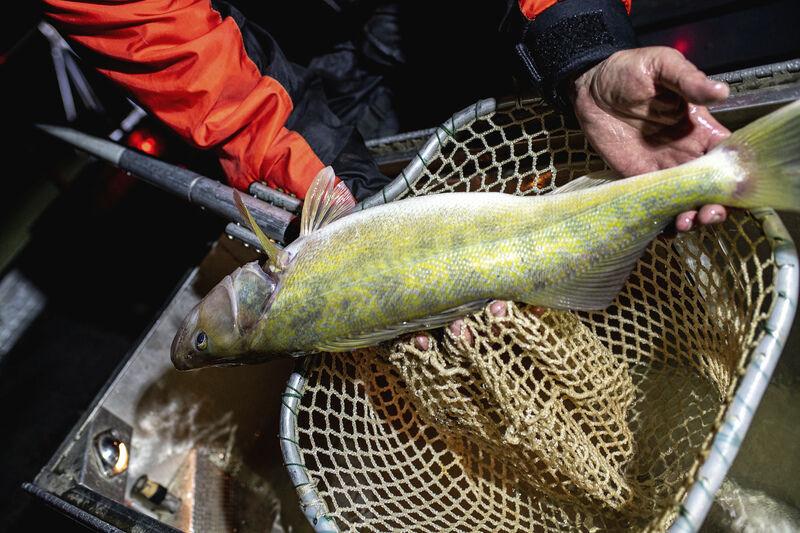
Several years ago, perhaps during a moment of weakness or a middle-aged crisis, I bought an aluminum bass boat with a trolling motor on the front and two sets of electronic fish finders for both the bow and stern. Growing up on the Elk River and later guiding for smallmouth bass on the New, bass-boat fishing is as foreign to me as it gets. I’m used to canoes and rafts with lots of moving water and feisty smallmouth bass leaping from the shoals and rapids.
But I now own a boat — all decked out. My goal? To learn to catch walleyes year-round in our waters. The learning curve was steep and still is, in fact, although I have begun to pattern the fish and even predict when I may actually be able to catch them. Don’t get me wrong, I am far from a pro, but having said that, my family has enjoyed many fish fries because of my efforts.
But I’m still learning every day. So when a note from Mark Scott, assistant chief of fish management for the West Virginia Division of Natural Resources, came across my desk, I was anxious to spread the news to others who may be on a quest to become a walleye-catching master.
“There’s never a bad time to go fishing when you’re in West Virginia, but if you want to target walleye, especially in rivers, you need to go in colder months, between November and March,” Scott said.
West Virginia’s native walleye grow quickly and reach trophy sizes, which makes them a popular sport fish for anglers. These unique, large-eyed predators also have been part of a special management project to improve and diversify fishing opportunities in the Mountain State since the early 2000s.
“It’s encouraging to see all our efforts paying off,” Scott said. “Photos of big walleye are getting out on social media and anglers in other states are seeing it and taking notice of all the great fishing opportunities here in West Virginia.”
Scott said outfitters around the state have told him that people as far as Canada are visiting the state to go walleye fishing.
“It’s cool to hear that because it means we’ve developed a fishery that’s known worldwide,” he said.
Walleye usually feed early in the morning and late in the evening or on overcast days. Scott says anglers should target walleye during these low-light periods when fish are most active.
“Anything that blocks upstream movement such as locks and dams or waterfalls are good places to target walleye,” Scott said. “For our native walleye, anglers will want to fish the rivers upstream of the Winfield Lock and Dam such as the Elk River, Coal River, upper Kanawha River, and New River.”
This time of year, walleye are moving upstream to areas such as Kanawha Falls, Sandstone Falls and the falls on the Coal River to prepare for spawning. When they can’t swim further upstream, they congregate in preparation for the spawning season in March.
“There are a lot of walleye in these areas right now,” Scott said. “Now’s a perfect time to go out and enjoy a fishing trip but anglers need to familiarize themselves with the regulations for the rivers they will be fishing. Some areas such as Sandstone Falls are under no-harvest regulations or other special regulations.”
Good luck and don’t forget to buy your new 2021 license before you go.
The Link LonkJanuary 31, 2021 at 03:00PM
https://ift.tt/39zYwYr
Now is the time to fish for walleye - Beckley Register-Herald
https://ift.tt/35JkYuc
Fish
No comments:
Post a Comment